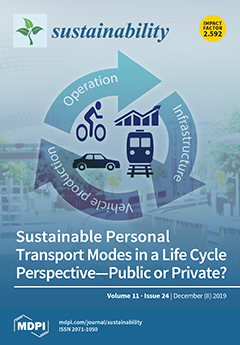During the past 20 years, the ecological environment of Dianchi Lake has been adversely affected by climate change and human activities, which directly affected the ecosystem and biodiversity of the Dianchi Lake watershed. Analyzing the spatiotemporal variation of chlorophyll a (Chla) concentration of
[...] Read more.
During the past 20 years, the ecological environment of Dianchi Lake has been adversely affected by climate change and human activities, which directly affected the ecosystem and biodiversity of the Dianchi Lake watershed. Analyzing the spatiotemporal variation of chlorophyll a (Chla) concentration of Dianchi Lake and exploring the internal and external factors effect on Chla concentration is the basis for controlling and improving the water ecological environment of Dianchi Lake, and it is also the key to prevent and control the water pollution of Dianchi Lake. In this study, the water quality of Dianchi Lake was examined using 12 water quality indicators from 10 water quality monitoring sites for the duration between 2000 to 2017. The changing characteristics of Chla in the context of internal and external factors were analyzed. The spatiotemporal evolution process of Chla concentration in the past 20 years was also evaluated. The results indicated that Chla concentration was significantly and positively correlated with the chemical oxygen demand (COD
Cr), the Dianchi Lake watershed gross domestic product (GDP), and the impervious surface area (ISA) of the watershed, in addition to the total phosphorus (TP), biochemical oxygen demand (BOD
5), ammonia hydrogen (NH
3-N), water temperature (WT), and civil vehicle ownership. Moreover, a significant and negative correlation was noticed between Dianchi Lake watershed GDP and NH
3-N, BOD
5, TP, total nitrogen (TN), and comprehensive nutrition state index (TLI). The Dianchi Lake population was negatively correlated with TP, TLI, and BOD
5. The concentration of Chla in Dianchi Lake was affected by both internal factors, and external factors such as anthropogenic activities, the latter of which was the main cause of the continuous deterioration of the lake water quality.
Full article





